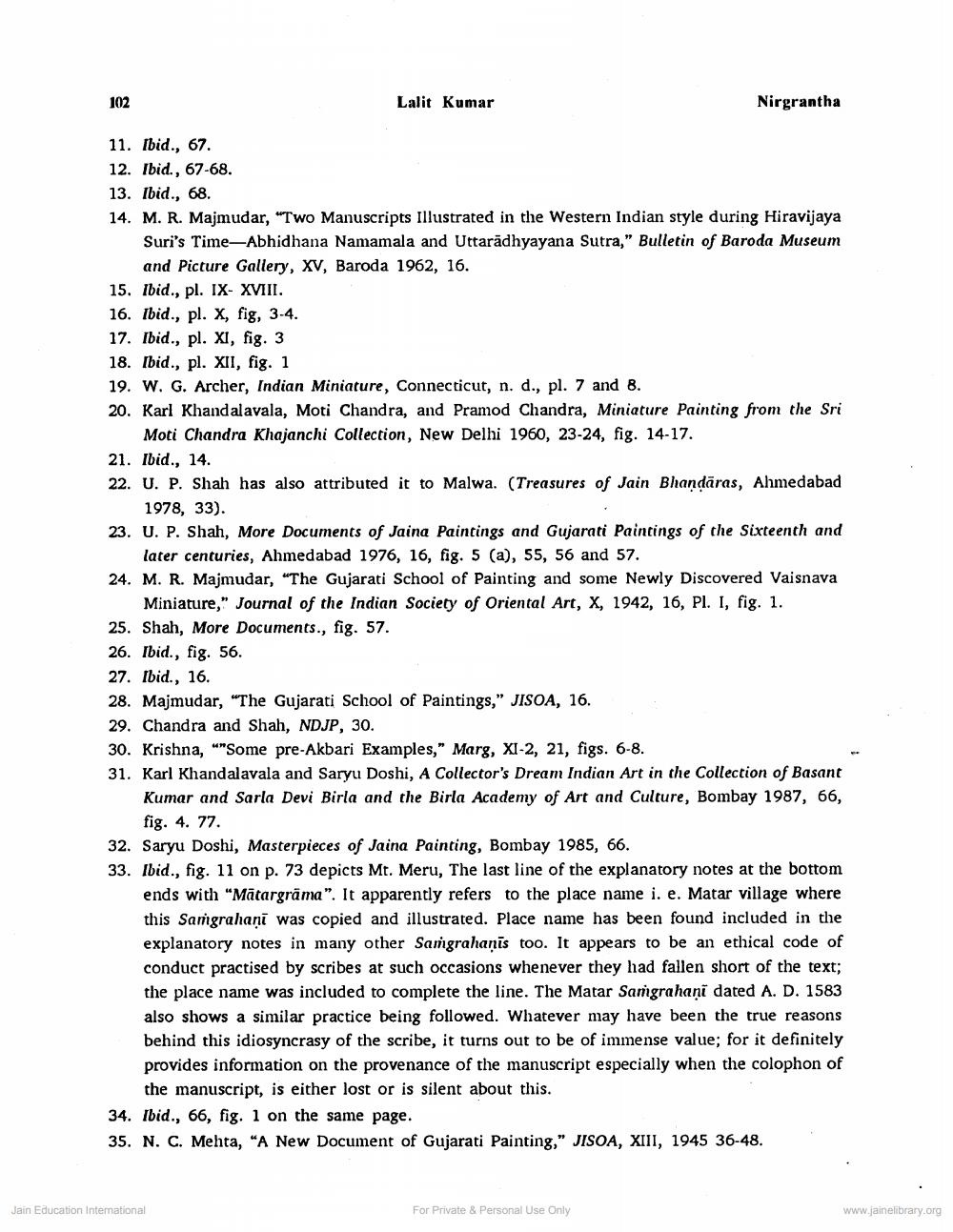________________
102
Lalit Kumar
11. Ibid., 67.
12. Ibid., 67-68.
13. Ibid., 68.
14. M. R. Majmudar, "Two Manuscripts Illustrated in the Western Indian style during Hiravijaya Suri's Time-Abhidhana Namamala and Uttaradhyayana Sutra," Bulletin of Baroda Museum and Picture Gallery, XV, Baroda 1962, 16.
15. Ibid., pl. IX- XVIII.
16. Ibid., pl. X, fig, 3-4.
17. Ibid., pl. XI, fig. 3
18. Ibid., pl. XII, fig. 1
19. W. G. Archer, Indian Miniature, Connecticut, n. d., pl. 7 and 8.
20. Karl Khandalavala, Moti Chandra, and Pramod Chandra, Miniature Painting from the Sri Moti Chandra Khajanchi Collection, New Delhi 1960, 23-24, fig. 14-17.
26. Ibid., fig. 56.
27. Ibid., 16.
21. Ibid., 14.
22. U. P. Shah has also attributed it to Malwa. (Treasures of Jain Bhandaras, Ahmedabad 1978, 33).
23. U. P. Shah, More Documents of Jaina Paintings and Gujarati Paintings of the Sixteenth and
later centuries, Ahmedabad 1976, 16, fig. 5 (a), 55, 56 and 57.
24. M. R. Majmudar, "The Gujarati School of Painting and some Newly Discovered Vaisnava Miniature," Journal of the Indian Society of Oriental Art, X, 1942, 16, Pl. I, fig. 1.
25. Shah, More Documents., fig. 57.
Nirgrantha
28. Majmudar, "The Gujarati School of Paintings," JISOA, 16.
29. Chandra and Shah, NDJP, 30.
30. Krishna, "Some pre-Akbari Examples," Marg, XI-2, 21, figs. 6-8.
31. Karl Khandalavala and Saryu Doshi, A Collector's Dream Indian Art in the Collection of Basant Kumar and Sarla Devi Birla and the Birla Academy of Art and Culture, Bombay 1987, 66, fig. 4. 77.
32. Saryu Doshi, Masterpieces of Jaina Painting, Bombay 1985, 66.
33. Ibid., fig. 11 on p. 73 depicts Mt. Meru, The last line of the explanatory notes at the bottom ends with "Matargräma". It apparently refers to the place name i. e. Matar village where this Samgrahani was copied and illustrated. Place name has been found included in the explanatory notes in many other Samgrahanis too. It appears to be an ethical code of conduct practised by scribes at such occasions whenever they had fallen short of the text; the place name was included to complete the line. The Matar Samgrahaṇī dated A. D. 1583 also shows a similar practice being followed. Whatever may have been the true reasons behind this idiosyncrasy of the scribe, it turns out to be of immense value; for it definitely provides information on the provenance of the manuscript especially when the colophon of the manuscript, is either lost or is silent about this.
Jain Education International
34. Ibid., 66, fig. 1 on the same page.
35. N. C. Mehta, "A New Document of Gujarati Painting," JISOA, XIII, 1945 36-48.
For Private & Personal Use Only
www.jainelibrary.org




